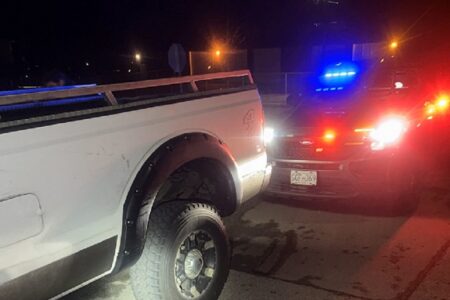DriveSmart BC: Why Close the Road After a Crash?
Occasionally you may find yourself waiting in a long line of vehicles for extended periods because a crash has temporarily shut down a highway. Here are some insights as to why the RCMP, working with the area highways contractor, has closed the road.
A crash will fall into one of three categories: Property Damage, Serious Injury, or Fatality.
Typically a Property Damage crash is not attended by the police unless it involves major damage, a road closure where vehicles involved in the collision block the roadway, or potentially a criminal element, such as impaired driving.
More often than not, once photos are taken and tow trucks arrive, the highway is opened.
An injury collision involves attendance by the RCMP or municipal police depending on location, as well as emergency responders, including ambulances and the fire department.
Highway closure time can depend on the number of people injured, how serious the injuries are, and if any criminal offences have been committed.
After all the factors have been considered and the scene has been examined for any physical evidence that may assist in the prosecution of a criminal charge, police may call out a “Collision Reconstructionist” to do a forensic examination of the scene.
Finally, tow trucks will attend to remove the vehicles and the highway is opened.
A fatality involves all of the above agencies, as well as a coroner.
The BC Coroners Service has primary responsibility at a scene involving a death and directs the overall coroner’s requirement for the investigation, including when the fatally injured individual(s) may be moved or removed from the scene. In some cases, especially in more remote areas, the police must wait for the arrival of the coroner and subsequent direction relative to the deceased.
The preservation of physical evidence, followed by its documentation and interpretation, are key in these very sensitive investigations. Once the highway is opened, any evidence that has not been properly documented is lost. The police only get one chance to capture the evidence, and when there is a criminal component, it becomes critical to any charges that may be considered later.
Consider this: if someone you know or employ was involved in a serious or fatal motor vehicle collision, would you want police officers to document it properly and ensure they have everything they needed to support their findings? Or would you be satisfied with a rushed job with a general idea of what had occurred?
Forensic documentation of a collision is very time-consuming and detailed work, requiring proper procedural and mandatory documentation.
Often you may see nothing on the highway and wonder why it is closed. The reasons vary, but it may be due to evidence that needs to be collected, body recovery, or sand trucks, to name just a few.
Additional factors affect highway closure times – for example, if it’s Highway 1 through Langley or Highway 97 at Muncho Lake (three hours north of Fort Nelson), response times will vary because of:
- location of the police traffic unit or General Duty Detachment (i.e., Langley, Lower Mainland Traffic in Chilliwack, or Northern Rockies Traffic at Fort Nelson);
- location of a Collision Reconstructionist (Lower Mainland Collision Reconstruction in Surrey or North District Collision Reconstruction in Fort St John – four hours south of Fort Nelson).
- Time of day
- Travel time for the first responders and the Collision Reconstructionist to attend the scene
- Severity of the crash – for example, whether highway rescue personnel are needed to cut people out of the vehicle(s) and how long it takes them to reach the scene, as well as any HAZMAT issues
- Types of vehicle(s) involved – commercial vehicles with HAZMAT loads require more specific equipment for recovery, which adds the time required to transport such equipment to the scene
- Location and types of tow trucks needed
- What physical evidence is there – does it take up the whole highway?
All the partner agencies involved in responding to a collision work hard and quickly to get the highway open as fast as we can. Sometimes a quick reopening is not possible. We only have one opportunity to collect all the evidence present.
We ask for patience from drivers who must wait, since the relatives, employers, friends and colleagues of individuals involved in an injury or fatal collision want as thorough an investigation as possible.
This article was written by Sergeant Harvey Nelson, NCO in Charge, North District Integrated Collision Analyst and Reconstruction Services, RCMP and shared with permission.
Story URL: https://www.drivesmartbc.ca/collisions/why-close-road-after-crash


























